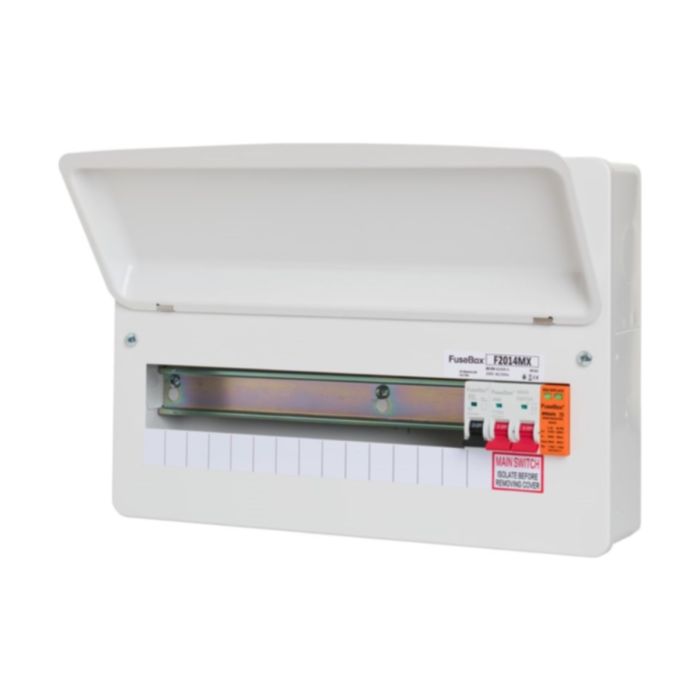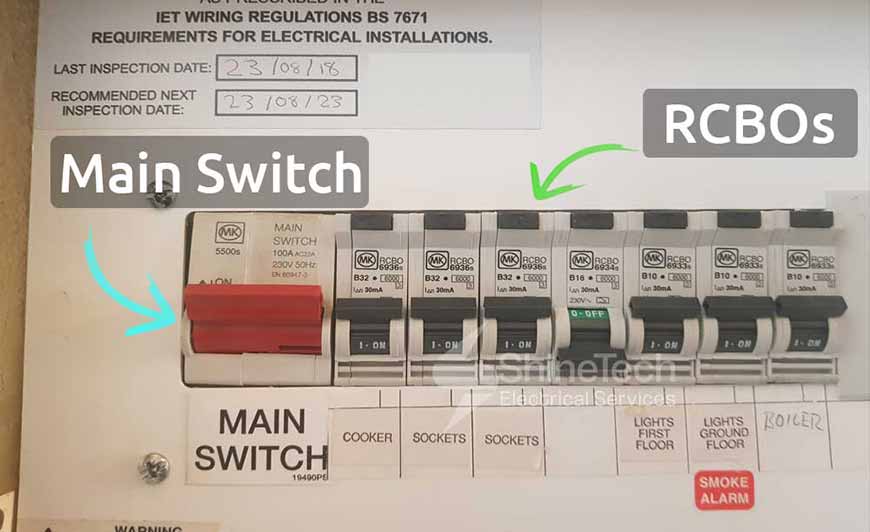The Significance of Setting Up Reliable RCBO CONSUMER UNITS in Your Property
The Function of Customer Systems in Effective Energy Administration Systems
Customer devices are important to efficient power monitoring systems, offering as the key circulation factors for electric power within structures. The arrival of smart modern technologies has actually better boosted their performance, permitting for real-time information surveillance and nuanced power usage evaluation.
Understanding Customer Devices

Comprehending the function of customer units begins with identifying their crucial feature in guarding electrical systems. By separating faults within details circuits, consumer systems protect against prevalent outages and potential fire hazards. This isolation is attained via using circuit breakers that trip or fuses that strike when a mistake is identified, thus removing the electric circulation to the affected circuit.
In addition, customer systems help with the orderly circulation of power, enhancing the performance of energy usage. They enable the organized management of electric loads, which can be especially vital in commercial and industrial settings where demand can vary substantially. Correctly kept consumer systems add to the durability of electrical systems and aid in reducing downtime caused by electric failings, inevitably sustaining the smooth procedure of energy-dependent centers.
Smart Technologies Integration

An essential advantage of clever consumer systems is their ability to leverage advanced formulas and device knowing for anticipating analytics. This enables preemptive adjustments based upon use patterns, weather condition projections, and other variables, dramatically increasing general efficiency. Furthermore, wise consumer units facilitate demand action programs, where energy use can be dynamically readjusted throughout peak periods to support the grid and reduce expenses.
The integration of eco-friendly energy resources, such as solar and wind, is likewise structured with smart consumer devices. By wisely taking care of the intermittency of these sources, these systems guarantee a trusted and balanced power supply. Furthermore, smart consumer systems improve customer interaction by giving thorough insights and push-button control capabilities through mobile applications, promoting a much more proactive method to power conservation and sustainability.
Tracking Energy Consumption
Building on the capabilities of smart modern technologies combination, checking power usage becomes a crucial focus within energy management systems. By leveraging advanced metering infrastructure (AMI), real-time data on power use can be gathered at granular degrees, giving beneficial insights right into usage patterns and peak demand periods.
Smart meters and Web of Points (IoT) tools play a crucial function in this surveillance process. These devices can track energy use in real-time, sending information to central systems for evaluation.
The integration of these technologies not just equips consumers with comprehensive information regarding their energy usage but additionally sustains energy companies in taking care of lots circulation more efficiently. Eventually, exact and continual monitoring is vital for achieving power performance, price financial savings, and sustainability objectives within power administration systems.
Optimizing Device Use

One efficient technique includes recognizing optimal and off-peak hours to shift energy-intensive activities, such as laundry or dishwashing, to times when energy need is reduced. This not just decreases stress on the grid however additionally utilizes on lower power tolls. Additionally, incorporating machine learning algorithms allows for predictive maintenance, ensuring appliances run at optimum efficiency and prolonging their lifespan.
Energy monitoring systems can likewise incorporate user-specific preferences and behaviors to customize home appliance use schedules. For example, wise lighting systems can change illumination based on tenancy and all-natural light availability, while a/c systems can keep convenience degrees without excessive power use.
Encouraging Sustainability
Advertising sustainability within energy administration systems entails not only boosting efficiency however also promoting environmentally accountable techniques. Customer systems are indispensable to this process, as they give real-time data and control systems that make it possible for users to keep an eye on and decrease their power intake. By leveraging advanced modern technologies, customer units can determine energy-saving possibilities and help with the combination of eco-friendly power sources like solar and these details wind power.
One essential aspect of advertising sustainability is enlightening consumers on the benefits of liable power use. Via comprehensive understandings given by customer systems, users can make informed decisions that decrease their carbon footprint. These systems can recommend optimum times for running high-energy devices based on grid demand and sustainable energy schedule, consequently minimizing reliance on fossil fuels.
Additionally, customer units support the adoption of wise grid innovations, which improve the general effectiveness and reliability of energy distribution. By enabling two-way communication between consumers and energy carriers, these systems can dynamically adapt to energy demands, lowering waste and promoting the use of lasting energy practices.
Final Thought
Consumer units, as important components of power management systems, this contact form significantly improve electrical safety and security and effectiveness within buildings via circuit protection and clever modern technology combination. Furthermore, the incorporation of sustainable power resources advertises lasting methods, contributing to minimized overall energy consumption and reduced carbon impacts.
Advances in smart innovations have actually reinvented click here for more the capabilities of power monitoring systems, especially through the integration of smart consumer devices.Building on the capacities of smart innovations combination, keeping track of energy usage ends up being a critical focus within power monitoring systems.Efficient appliance use optimization is a vital component of energy management systems, intending to improve performance and minimize unneeded power usage.Customer systems, as essential parts of power monitoring systems, significantly boost electric safety and security and performance within structures via circuit defense and smart innovation assimilation. Additionally, the unification of sustainable power sources advertises lasting methods, adding to minimized total power intake and reduced carbon impacts.